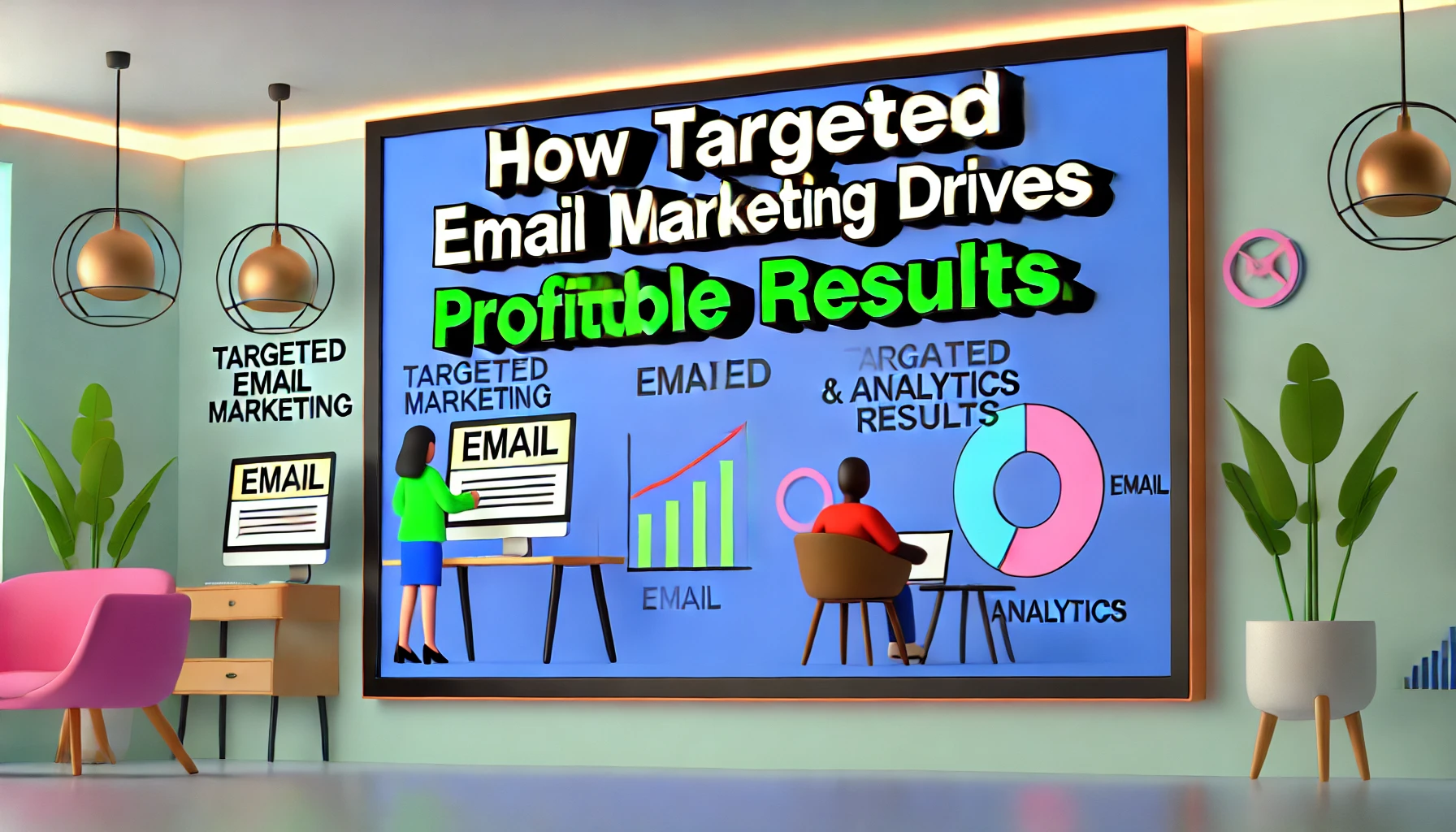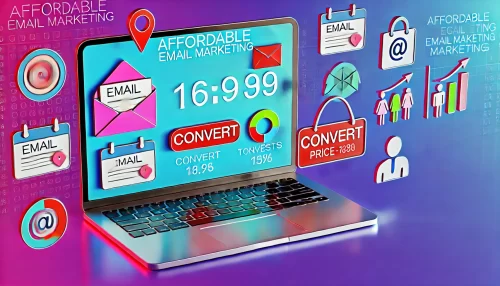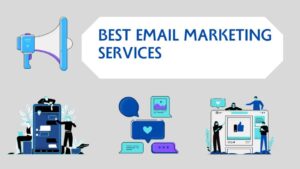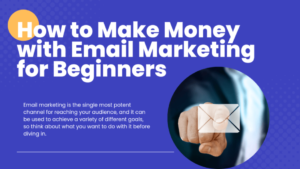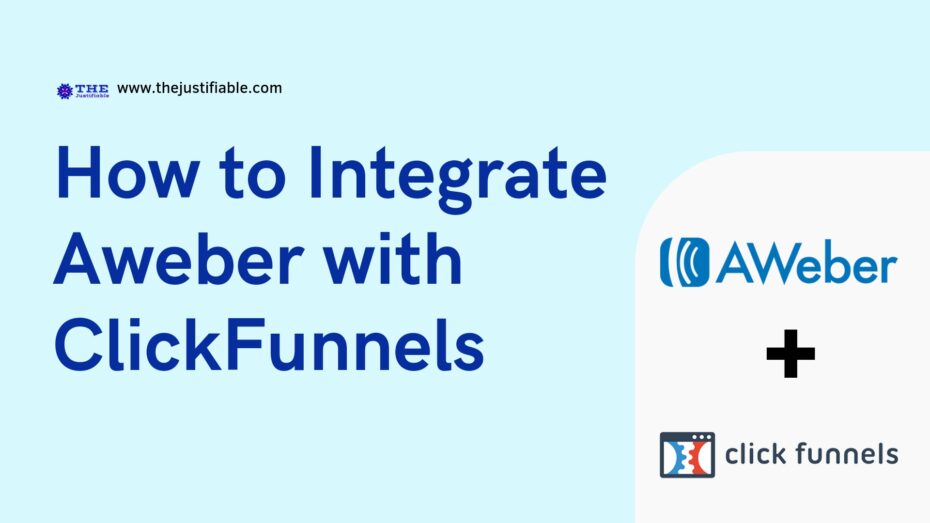Table of Contents
Are you seeking ways to enhance your marketing strategy? Have you considered how targeted email marketing can drive profitable results? In this article, we’ll explore the benefits and strategies of targeted email marketing to help you achieve your business goals.
Understanding Targeted Email Marketing
Targeted email marketing focuses on sending specific messages to segmented audiences, enhancing relevance and engagement. It’s a powerful tool for connecting with subscribers meaningfully, improving both open and conversion rates. Let’s break down the essentials of this approach.
Definition and Importance
Targeted email marketing is all about customizing messages for different segments of your audience. By focusing on specific interests or behaviors, targeted emails can better engage subscribers. I believe it’s a strategy that allows brands to truly connect with their audience.
Targeted email campaigns hold importance because they align with users’ interests, making them feel understood and valued. In contrast, generic campaigns often miss this mark, reducing engagement. Targeted marketing shows subscribers that you’re listening to their needs.
This form of marketing also improves customer loyalty over time. By delivering content that resonates, brands foster trust and connection. It’s about showing that you know your audience, not just selling to them.
I recommend starting with simple segmentations, like demographics or purchase history, to make your email marketing more personal. Small, strategic changes can make a big difference in engagement and response.
Differences Between Targeted and General Email Campaigns
Targeted emails stand out because they cater to segmented groups, unlike general campaigns that go to everyone. These segmented emails bring higher engagement, as they speak to specific needs, creating relevance and boosting open rates.
General email campaigns tend to overlook personalization. They provide the same message to all, which often results in lower engagement. Targeted emails address individual interests, making them feel more relevant and encouraging action.
With targeted email marketing, I suggest tailoring content to different user groups, which can significantly increase conversions. By addressing individual preferences, targeted emails make subscribers feel valued and respected.
Targeted campaigns also provide a more refined user experience. When users receive content that resonates, they’re more likely to stay connected, leading to improved loyalty and customer retention.
Key Components of Effective Targeted Emails
Effective targeted emails hinge on segmentation, personalization, and timing. Segmenting your audience allows for better targeting, while personalization strengthens relevance and engagement. Timing optimizes when messages are most likely to be opened.
Audience segmentation is crucial, as it enables you to group users based on behavior, preferences, or demographics. With these insights, each email feels more personalized, addressing the unique interests of each segment.
Personalization goes beyond just adding a name. I suggest tailoring content to reflect recent activity, past purchases, or stated preferences. This strategy improves relevance and keeps subscribers engaged.
Timing is another essential factor. Knowing when your audience is most active helps ensure emails are opened. By scheduling emails during high-activity periods, you can maximize your reach and impact.
Benefits of Targeted Email Marketing
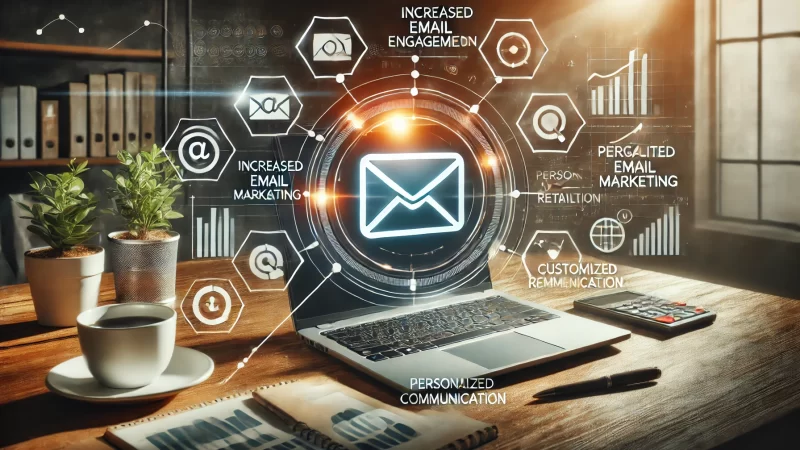
The benefits of targeted email marketing are significant, offering brands better engagement, higher conversion rates, and increased customer loyalty. This approach also provides a cost-effective way to reach audiences compared to other marketing channels.
Increased Engagement Rates
Targeted emails typically lead to higher engagement rates because they focus on relevancy. When subscribers receive messages that interest them, they’re more likely to open and interact. I suggest using targeted content to foster this type of connection.
Engagement rates rise with emails that reflect the audience’s preferences. Sending tailored content encourages actions, like clicks and responses, increasing overall interaction. Targeted emails are more effective in keeping subscribers interested.
Effective targeted emails often encourage users to explore products or content they wouldn’t usually consider. This engagement can lead to increased browsing and potential purchases, creating an enriched user experience.
Targeted email marketing also strengthens customer relationships, showing them that you understand their needs. This connection drives engagement and fosters loyalty, making subscribers more likely to stay with your brand.
Higher Conversion Rates
Targeted email marketing often yields higher conversion rates by providing content that aligns with the user’s interests. Personalizing emails for each segment ensures a stronger alignment with what each group values and wants.
When subscribers receive targeted messages, they’re more likely to take action. I advise focusing on user preferences and behaviors to guide content, which leads to a smoother, more natural path to conversion.
Targeted emails enable you to address pain points directly. By crafting messages that highlight solutions to their problems, brands can drive conversions more effectively than with generalized content.
The targeted approach also minimizes wasted efforts, allowing brands to focus on subscribers most likely to convert. This not only improves results but also reduces marketing costs, making campaigns more efficient.
Improved Customer Retention
Targeted email marketing is key to boosting customer retention. By continually engaging users with relevant content, brands build trust and encourage repeat interactions. I suggest using targeted campaigns as a tool for long-term customer loyalty.
Retention rates benefit when customers feel understood. Targeted emails provide personalized recommendations or valuable information, fostering a stronger connection. This increases the likelihood that subscribers will stay engaged over time.
By continually delivering relevant content, you keep subscribers interested, reducing churn rates. Targeted emails remind users of your brand, helping you remain top-of-mind and encourage loyalty.
Targeted marketing also creates a sense of belonging, as subscribers receive content tailored to their preferences. This sense of personalization fosters loyalty and improves retention, as they feel your brand cares about their needs.
Cost-Effectiveness Compared to Other Channels
Email marketing is generally more cost-effective than other channels, and targeted campaigns maximize this benefit by focusing on valuable segments. This targeted approach ensures that marketing dollars are spent wisely, increasing overall ROI.
Brands often see a higher ROI with targeted emails because they reach audiences more likely to engage. With focused efforts, I suggest prioritizing segments that show high engagement for efficient and impactful campaigns.
Targeted email marketing also reduces the risk of unsubscribes, as messages cater to user interests. This reduces costs associated with reaching uninterested users, optimizing spend toward higher-quality interactions.
Email marketing remains one of the most cost-effective channels, especially when tailored to specific audience needs. By enhancing message relevance, targeted emails provide value at a lower cost, maximizing each marketing dollar.
Strategies for Implementing Targeted Email Campaigns
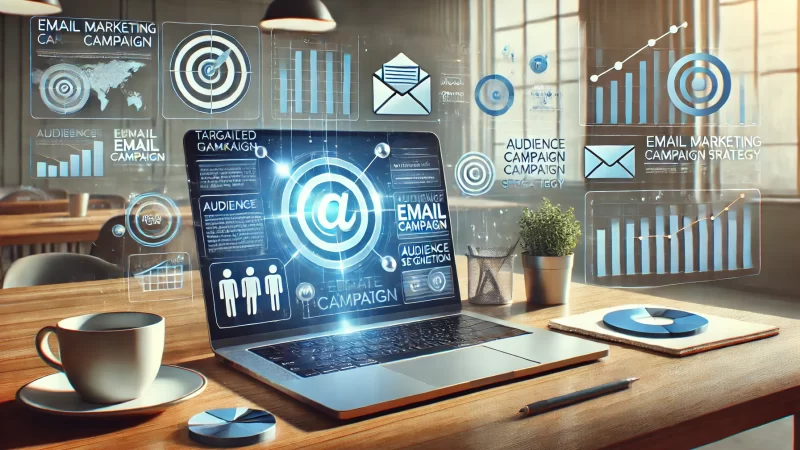
Implementing targeted email campaigns involves strategic steps to reach the right audience with the right message. Each step helps in crafting an approach that resonates with subscribers, building meaningful connections that improve engagement and drive results.
Segmenting Your Email List
Segmenting your email list is the foundation of targeted email marketing. This approach involves dividing subscribers based on specific criteria, like demographics or purchase behavior. I suggest focusing on key segments to improve message relevance and impact.
With effective segmentation, you can send tailored messages that speak directly to each group’s interests. For example, if you have a mix of new and loyal customers, segmenting allows you to address their unique needs and encourage action.
Segmentation doesn’t have to be complex to be effective. Even simple groupings based on location or age can help you craft more relevant content. I advise testing different segmentation methods to find what resonates with your audience.
Segmenting also enhances the user experience by preventing irrelevant emails from cluttering subscribers’ inboxes. By respecting their preferences, you build trust and foster loyalty, which benefits both engagement and brand reputation.
Personalizing Email Content
Personalized email content goes beyond adding a name. True personalization includes customizing content to reflect subscribers’ interests, purchases, and behavior. I recommend using personalization to make each email feel crafted just for the reader.
Personalized emails can significantly improve open rates because they offer relevant information. When subscribers see content that matches their preferences, they’re more likely to engage, increasing your campaign’s effectiveness.
In my experience, personalization builds stronger customer relationships by making users feel valued. Tailored messages show subscribers you understand their needs, encouraging them to stay connected with your brand.
I suggest using data insights to personalize subject lines, product recommendations, or content topics. These small touches help each subscriber see your emails as valuable, not just another marketing message in their inbox.
Timing and Frequency Optimization
Timing and frequency play crucial roles in email marketing. Finding the right moment to reach subscribers ensures your emails don’t get lost in crowded inboxes. I believe timing can make or break the success of targeted email marketing campaigns.
The right frequency keeps subscribers engaged without overwhelming them. Too many emails can lead to unsubscribes, while too few may cause subscribers to forget your brand. I recommend testing different schedules to find what works best for your audience.
Optimizing timing means understanding when your audience is most active. For example, if most of your subscribers are online in the evenings, sending emails during that period can boost open rates.
I suggest monitoring performance metrics to adjust your timing and frequency as needed. This approach helps you stay connected without bombarding subscribers, enhancing both engagement and retention.
A/B Testing for Continuous Improvement
A/B testing is essential for refining your targeted email marketing campaigns. By testing elements like subject lines, visuals, or calls-to-action, you can identify what works best. I advise integrating A/B testing into every campaign for optimal results.
A/B testing helps reveal subscriber preferences, allowing you to make data-driven decisions. For example, if one subject line performs better, you can use it to increase opens in future campaigns.
Testing can be simple yet impactful. I suggest starting with small changes, like adjusting the email’s layout or call-to-action. Even minor tweaks can make a noticeable difference in engagement rates.
Continuous testing keeps your strategy fresh and responsive to audience needs. By making informed adjustments, you can gradually improve performance, leading to better results over time.
Measuring the Success of Your Campaigns

To ensure your targeted email campaigns are effective, it’s crucial to track their performance. Measuring success allows you to see what’s working and where improvements are needed, helping you optimize future campaigns for even better results.
Key Performance Indicators to Monitor
Key performance indicators (KPIs) provide insight into your campaign’s success. KPIs like open rates, click-through rates, and conversion rates are essential for evaluating engagement. I suggest focusing on KPIs that align with your specific campaign goals.
Monitoring KPIs helps you understand subscriber behavior and preferences. If open rates are low, it may signal that your subject lines need improvement to grab attention effectively.
Tracking conversions reveals whether subscribers are taking the desired actions, like making a purchase or signing up for a service. Higher conversions indicate that your messages are resonating and driving action.
Regular KPI analysis enables you to adjust strategies to meet audience needs better. By focusing on meaningful metrics, you can continually refine your approach, improving both engagement and ROI.
Analyzing Open and Click-Through Rates
Open and click-through rates are vital indicators of engagement. They reveal how well your subject lines and content resonate with subscribers. I recommend using these rates to gauge the effectiveness of your targeted email marketing.
Open rates reflect how well your subject lines capture attention. Low open rates may suggest a need for more compelling language that encourages subscribers to read the content.
Click-through rates indicate whether subscribers find your content engaging enough to explore further. If clicks are low, refining the call-to-action can help motivate readers to take the next step.
High open and click-through rates signal that your emails are relevant and valuable to your audience. I suggest focusing on these metrics to ensure each email drives the engagement you’re aiming for.
Assessing Return on Investment (ROI)
ROI is a key measure of email marketing success, showing the value your campaigns bring relative to costs. I believe ROI analysis is essential to understanding the overall impact of your targeted email marketing efforts.
A positive ROI demonstrates that your campaigns are effective and worthwhile. By comparing revenue generated from campaigns with your marketing costs, you gain insights into their financial performance.
Calculating ROI also helps prioritize high-performing strategies. For instance, if a particular campaign yields significant returns, you may consider allocating more resources to similar approaches.
Regular ROI assessment ensures your email marketing efforts align with business goals, guiding your strategy toward maximizing profitability and sustaining long-term success.
Common Challenges and Solutions

Navigating common challenges in targeted email marketing can enhance your campaign’s effectiveness. Understanding these obstacles and finding practical solutions allows for smoother, more impactful campaigns that resonate with subscribers and drive desired outcomes.
Avoiding Spam Filters
Spam filters can hinder your targeted email marketing efforts if emails don’t reach the inbox. Avoiding spam filters requires attention to email content, sender reputation, and subscriber engagement. I suggest focusing on these areas for better deliverability.
Crafting emails with a natural tone helps prevent them from triggering spam alerts. Spam filters are sensitive to overly promotional language, so I recommend keeping the content genuine and engaging, focusing on delivering value rather than sounding like a sales pitch.
Sender reputation plays a big role in avoiding spam filters. Maintaining a positive reputation involves consistent engagement and avoiding practices like list purchasing. A strong reputation shows email providers that your emails are trustworthy.
Regularly analyzing engagement metrics like open rates and click-throughs can improve your deliverability. Positive interactions signal to email providers that subscribers find your content valuable, reducing the likelihood of emails landing in spam.
Maintaining List Hygiene
Maintaining list hygiene is crucial for effective targeted email marketing. A clean email list enhances deliverability and ensures you’re reaching active, interested subscribers. I recommend periodic list cleanup to keep engagement high and avoid deliverability issues.
Removing inactive subscribers improves list quality. If users haven’t engaged with your content for months, it’s often best to remove them. This process keeps your list focused and boosts deliverability by reducing bounces.
Updating subscriber information regularly also maintains list hygiene. Accurate data allows for better segmentation and personalization, so I suggest reaching out to subscribers to confirm or update their preferences periodically.
Ensuring only subscribers who want your content receive emails keeps your list engaged. This approach builds trust and reduces the likelihood of unsubscribes or spam complaints, strengthening your sender reputation.
Ensuring Mobile-Friendly Emails
With a growing number of users accessing emails on mobile devices, mobile-friendly emails are essential for successful targeted email marketing. Ensuring mobile compatibility enhances user experience, making it easier for subscribers to engage with your content.
Responsive design is key to mobile-friendly emails. Optimizing layouts for various screen sizes ensures readability and functionality. I advise using mobile-friendly templates to provide a consistent experience across devices, which keeps subscribers engaged.
Clear, concise content is important for mobile emails. I suggest focusing on direct, valuable messaging, as mobile users often skim content. Short paragraphs and visually appealing elements improve readability and encourage action.
Including clear calls-to-action helps mobile users interact easily. Large, clickable buttons simplify navigation, ensuring subscribers can engage without zooming or struggling to click. This convenience makes it more likely they’ll take the desired action.
Future Trends in Targeted Email Marketing
The landscape of targeted email marketing is continuously evolving, with new trends shaping how brands engage their audiences. Embracing these trends can give your campaigns an edge, enhancing engagement and staying relevant to subscribers’ expectations.
Integration with Artificial Intelligence
Artificial intelligence is transforming targeted email marketing, allowing brands to analyze vast data sets and create personalized experiences. I suggest exploring AI tools to streamline your campaigns and improve personalization for each subscriber.
AI-powered tools can enhance segmentation by identifying patterns within your subscriber base. This allows for more refined targeting, ensuring content aligns closely with audience preferences and behaviors, which improves engagement.
Predictive analytics in AI can help anticipate subscriber needs. By analyzing past behavior, AI tools suggest content likely to resonate, enhancing relevance and increasing the chance of engagement with each email.
AI also aids in timing optimization. Using data insights, AI can determine the best times to reach individual subscribers, increasing open rates. I recommend experimenting with AI-driven timing to maximize your campaign’s reach.
Enhanced Personalization Techniques
Enhanced personalization techniques are a rising trend in targeted email marketing, allowing brands to go beyond basic personalization. I suggest focusing on dynamic content, which adjusts based on real-time data to create unique experiences for each subscriber.
Dynamic content lets you tailor elements like product recommendations or promotional offers to each subscriber’s preferences. This real-time approach ensures that your content remains relevant and engaging, building stronger customer relationships.
Advanced personalization can also include location-based offers. Targeting subscribers based on their location adds a layer of relevance, encouraging engagement. I advise experimenting with location data for more personalized offers.
Personalization also extends to email journeys. Crafting customized email flows based on subscriber behavior, such as past purchases or website interactions, ensures content aligns with their needs, fostering loyalty and repeat engagement.
Privacy Regulations and Their Impact
Privacy regulations are reshaping email marketing practices, with increasing emphasis on subscriber data protection. I recommend keeping up with privacy laws like GDPR or CCPA to ensure your targeted email marketing complies and respects user preferences.
Privacy regulations require transparent data collection. Informing subscribers about how their data will be used builds trust. I suggest clear opt-in processes, where subscribers understand and consent to receiving emails, ensuring compliance.
Regulations often dictate specific data usage practices. Limiting data collection to only what’s necessary demonstrates respect for subscriber privacy. This approach also aligns with ethical marketing practices, building brand credibility.
Managing data access is another critical aspect. Using secure platforms and limiting access to subscriber data within your organization safeguards privacy, reinforcing trust and ensuring your practices align with regulatory standards.


